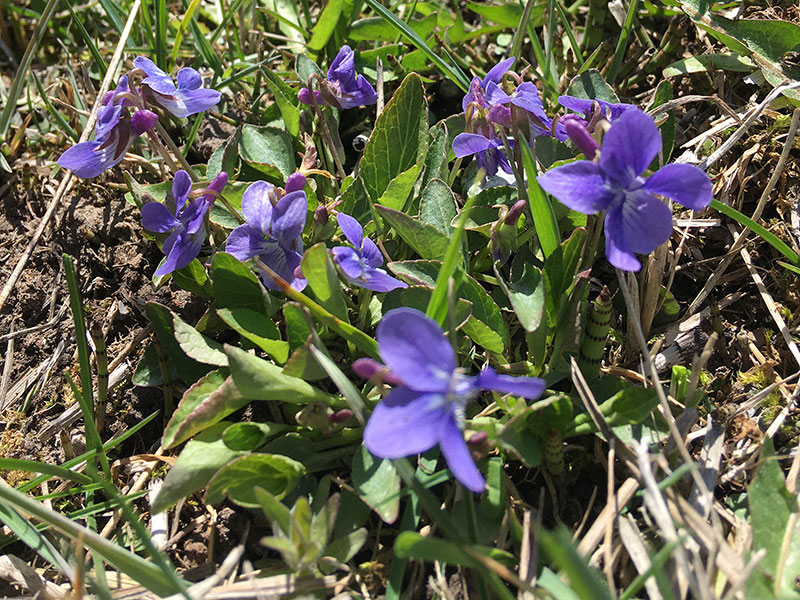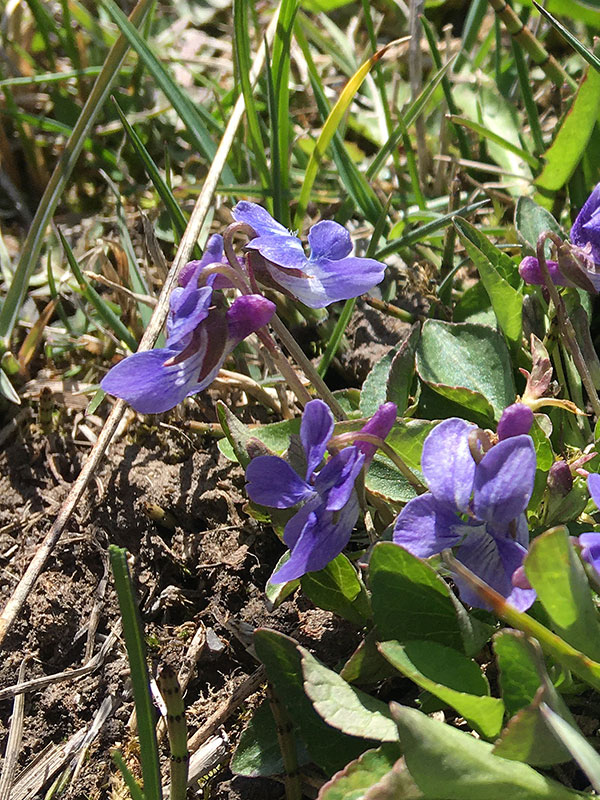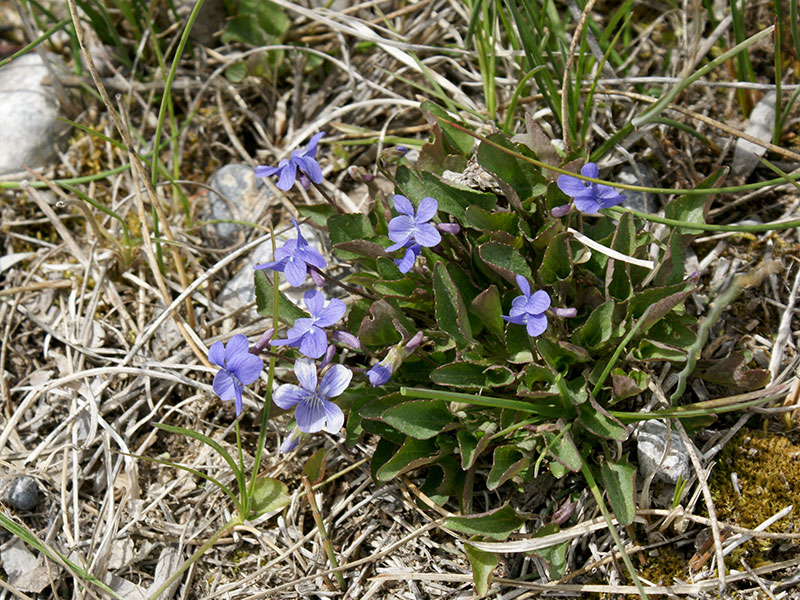Viola adunca / hooked violet
- early spring, low to ground
- small violet (blue) flowers with small white beards, small reddish spur
- heart-shaped leaves
- generally in somewhat moist areas
Also known as: hookedspur violet, early blue violet, sand violet, and western dog violet
Violets of any color are fairly common in the Valley, but finding any of them is a treat. It turns out that only one species in the Valley, and all of Idaho, has a blue (OK, violet) flower, so identifying that one to species is easy. It seems odd that the other violets are yellow, but that simply reflects the origin of the family and genus names.
You will run across the hooked violet in various meadows, forests, riparian zones and some country roadsides. It is perennial, so if you find it this year, you will likely find it next year in the same spot. The plants grow in the spring with multiple stems arising from short rhizomes. On the other hand, violets are, ecologically speaking, poor competitors, easily displaced by invasive species, or shaded out by thatch from non-native grasses.
The flowers of the violet are “nodding” and range from pale to deep violet. The inflorescence is but a single flower on a long, thin stem (peduncle). Each of the two side petals has a white beard near the throat of the flower, and may have hooks or spurs at their tips. Darker purple veins at the base of lower 3 petals serve as bee guides, being particularly bright in the UV wavelengths. The flowers are only about 1/2 inch across. Look closely at the flower and you will see that it has an upward turning spur behind the upper petals; this is actually part of the lower central petal.
A really cool feature of all violets is that the ripened seed pods open explosively, throwing the seeds some significant distance away from the mom. The seeds persist in the seed bank for some years and experimental studies have shown that fire stimulates their germination.
The basal leaves are spade- or heart-shaped and may still be partly rolled when flowering occurs. Sometimes, the leaf margins are wavy. Stem leaves are smaller and less rounded. All of them range in length from about 1/2 to 2 inches. They have long petioles and only a physiologist would ever have been weird enough to discover that if you “pop” the petiole just right, you can pull the central vascular bundle out of it.
The leaves and flowers are edible. The leaves contain more vitamin A than spinach, and a half-cup of leaves has more vitamin C than four oranges! Try them in salads or teas. But they may be a bit slimy. Note, however, that the rhizomes, fruits and seeds are poisonous.
| Color | |
|---|---|
| Family | |
| Blossom size | |
| Inflorescence size | |
| Inflorescence type | |
| When? | |
| Where? | forest gaps and roadsides, moist meadows, riparian, stream banks |



